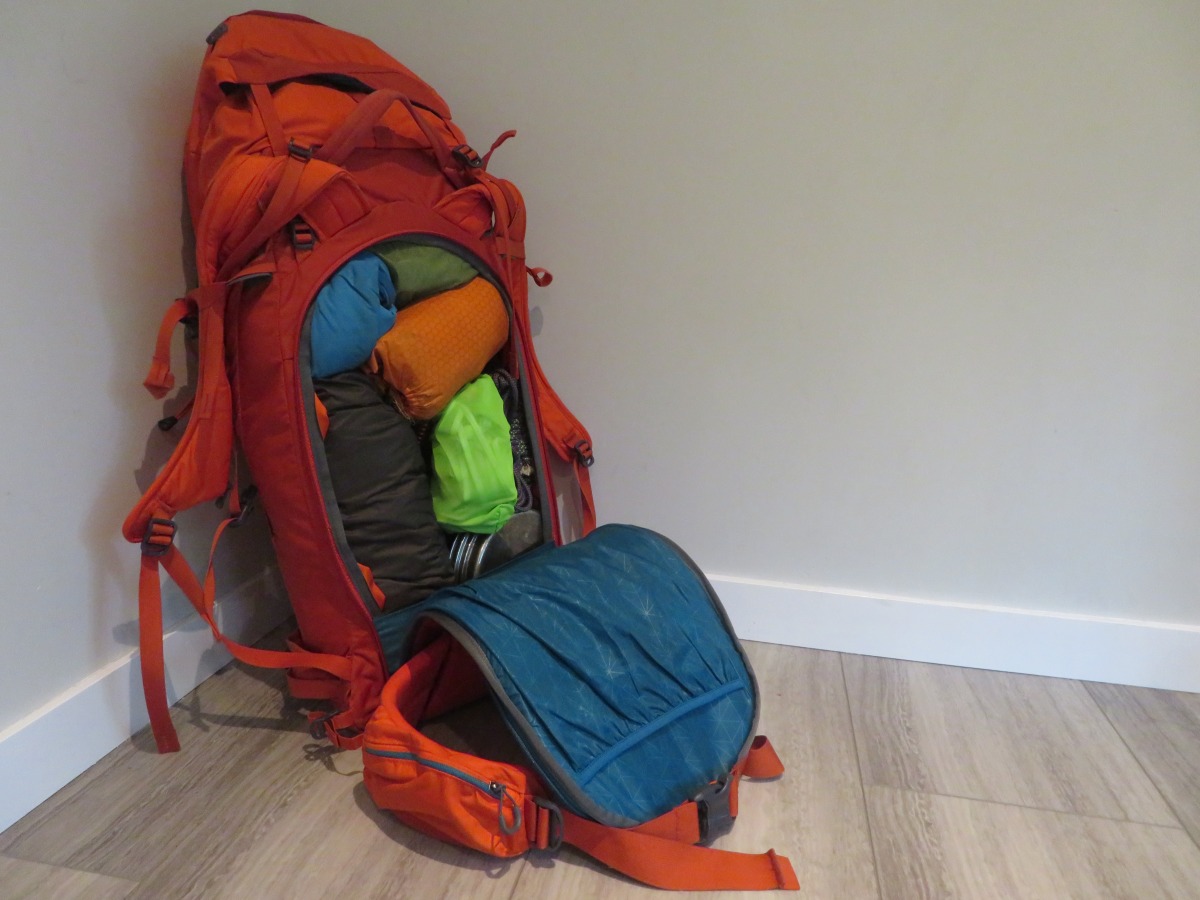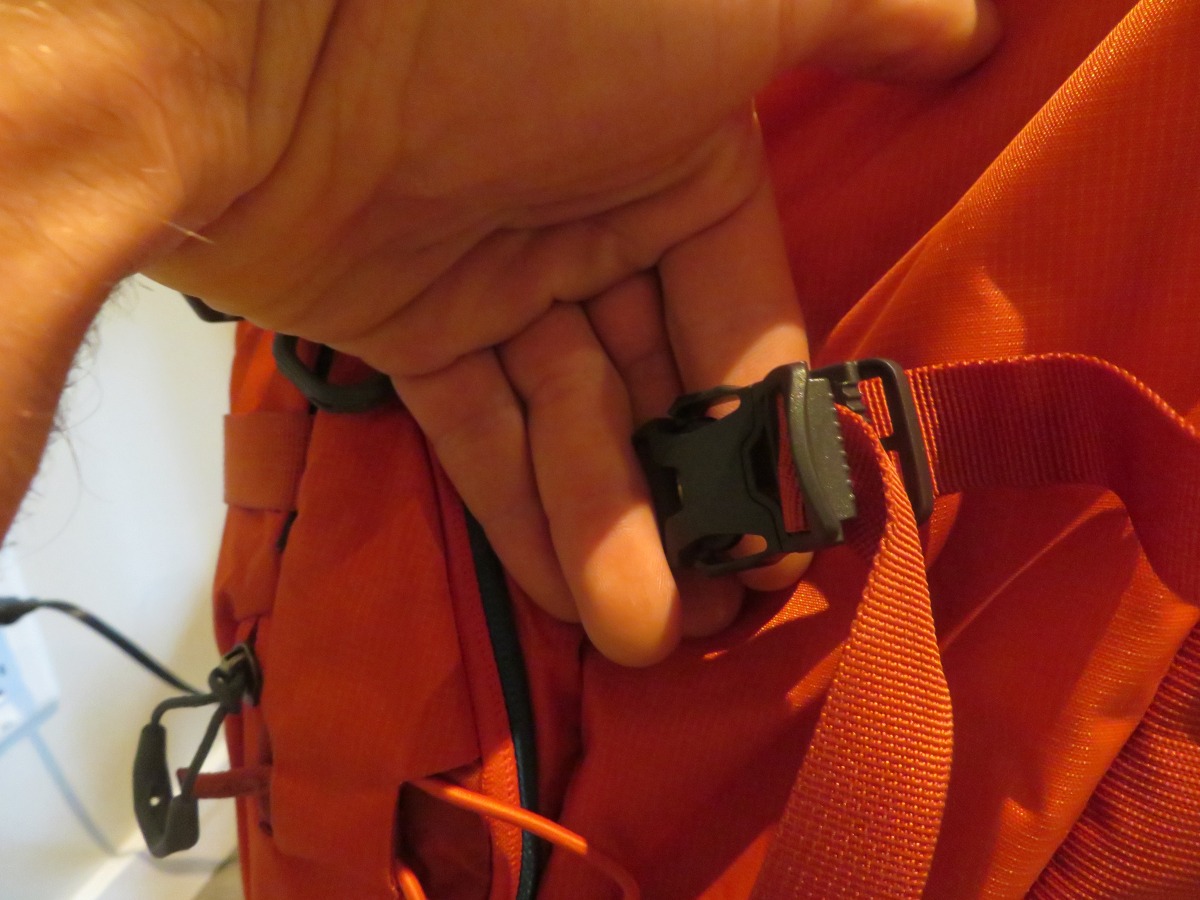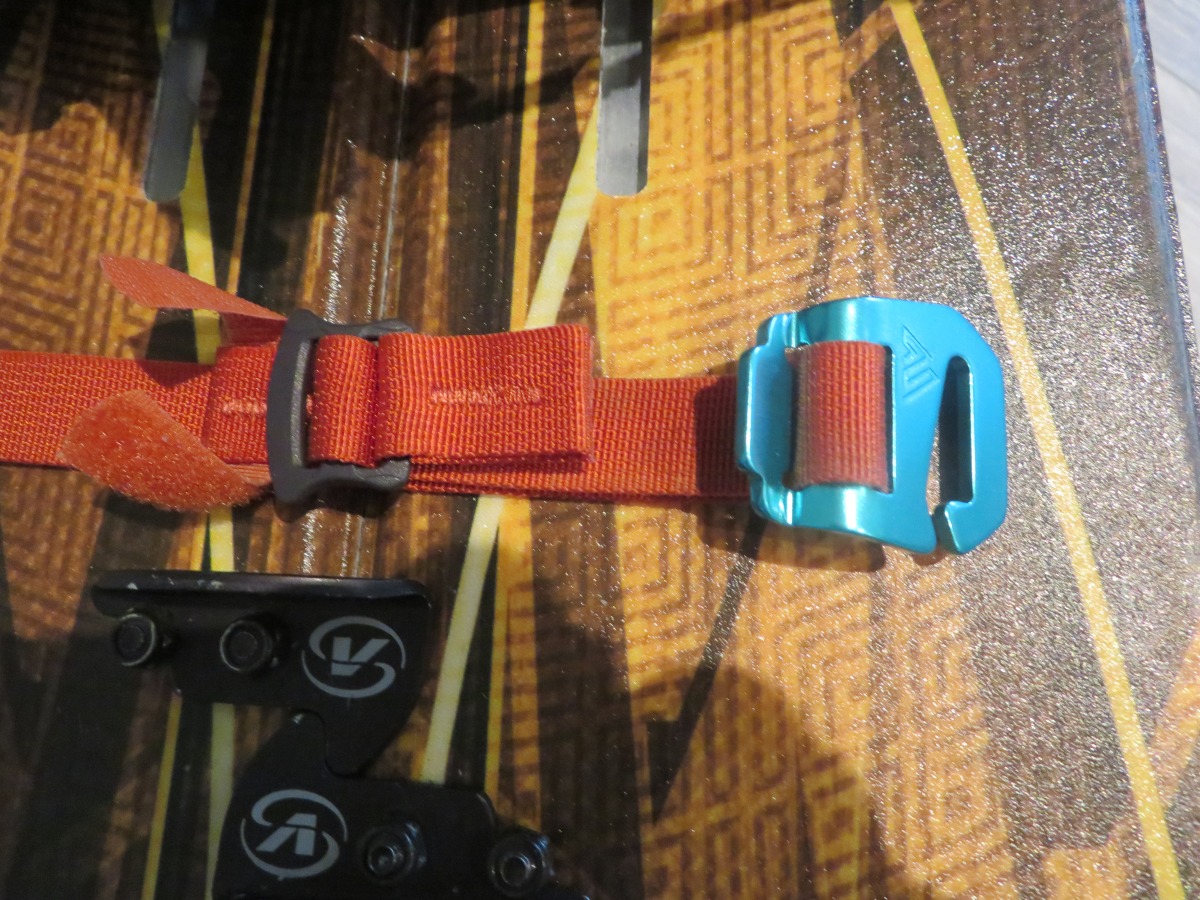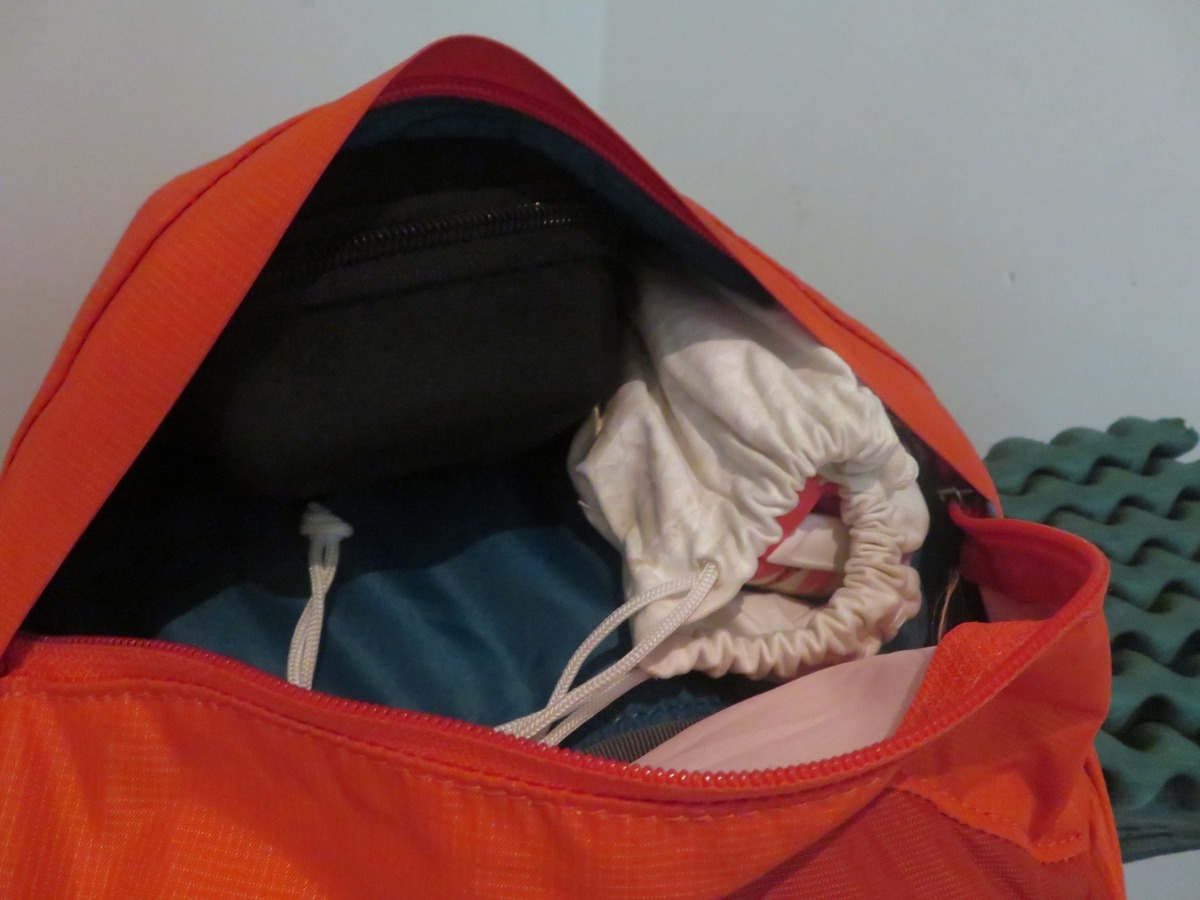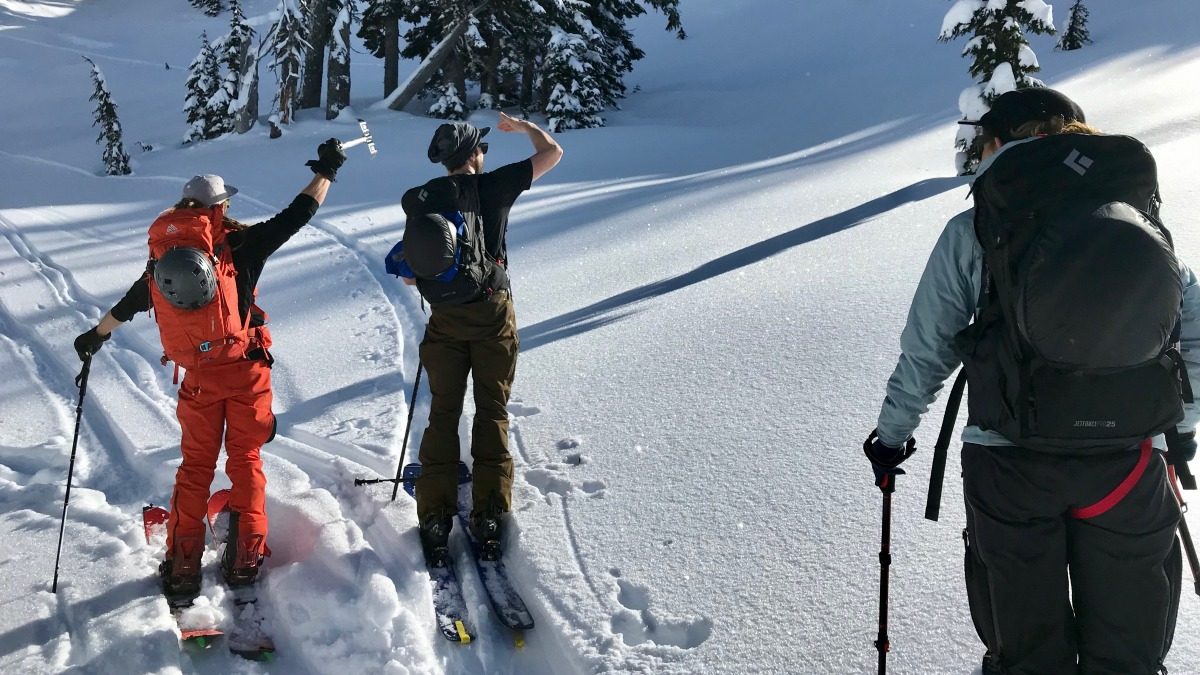
With 45L of capacity, the Gregory Targhee 45 (left) offers versatility for longer or shorter backcountry outings.
Consumer-type luck and product design are more intimately tied than I would like. It’s been rare that a well designed product which meets the majority of my needs comes to light and then crosses my path. For instance, the downfall of Dakine’s Guide series has left me with PTSD — a result of immeasurable sadness, highs and lows, and peaking fears — should my most recent course of stitching blow out again. The stitch, blow out, re-stitch, re-blow out, give up stitching altogether, only to start the stitching and blowing out process (again) led me to contemplate spending shameful amounts of money Ebaying an archaic pack. Used, these packs would sell for far more than they were ever worth new. I spent years making lesser packs work for me, until recently.
Gregory’s Targhee 45 strikes a variety of balances: between comfort and lightness, adaptability and specialized function, bells and whistles, and blue-collar features — those which make a pack a pack and the grind-work possible. Its flavors are a bit off to be the pack of my dreams (see farther down), but I’ll look no further to replace the Guide. In truth to my sobriety, I’ve surrendered the loner for the Targhee – most of its volumes are worthy of gold.
In many ways, the Targhee offers what one would expect out of a backcountry pack: Durability, spaciousness, adaptability, and organization. The pack is armored with cordura, both abrasion resistant and water resistant enough to combat rock scuffing, and Pacific North Western precipitation in any form it presents. At 45L with multiple access points and activity specific regions (store your avalanche equipment here) the pack is highly ordered, but not excessive. It weighs empty at 1.87 kg (4.12 lbs), which although certainly not minimalist is average for comfortable workhorse packs. The shoulder straps are not superfluous but are available to support your needs from day trip to traverse.
I carried the Targhee for a solid month of single day backcountry trips. These days included work and recreational travel, encompassing glacial slogs, dense forest, and fun free ride terrain, as well as a variety of weather experiences ranging from torrential rain, to the sunniest, bluest days. This diversity of experiences allowed for different loads ranging from an optimized “sausage stuffed” pack including the kitchen sink, leaner days with lunch and a layer, and everything in between. I didn’t have the opportunity to test the pack in an overnight capacity; I can express with certainty that it would function very well. I don’t own smaller packs, and found the pack tweakable and compressible to allow for dexterity while carrying smaller volumes.
Features
One of my needs in an avalanche pack is a rescue equipment pouch. I carry a 3m probe – at minimum and with few exceptions – a spade with a generous handle, and sometimes a saw. Modern probes are collapsible – and still somehow rarely fit in the rescue pouch. Rescue gear tends to only fit in packs made by manufacturers, and far too often, I find I’m ripping a pocket after begging a partner to bear-hug my pack together while I zip it up. The Targhee accommodates all makes and models of probes (and shovel handles) – without discretion – comfortably.
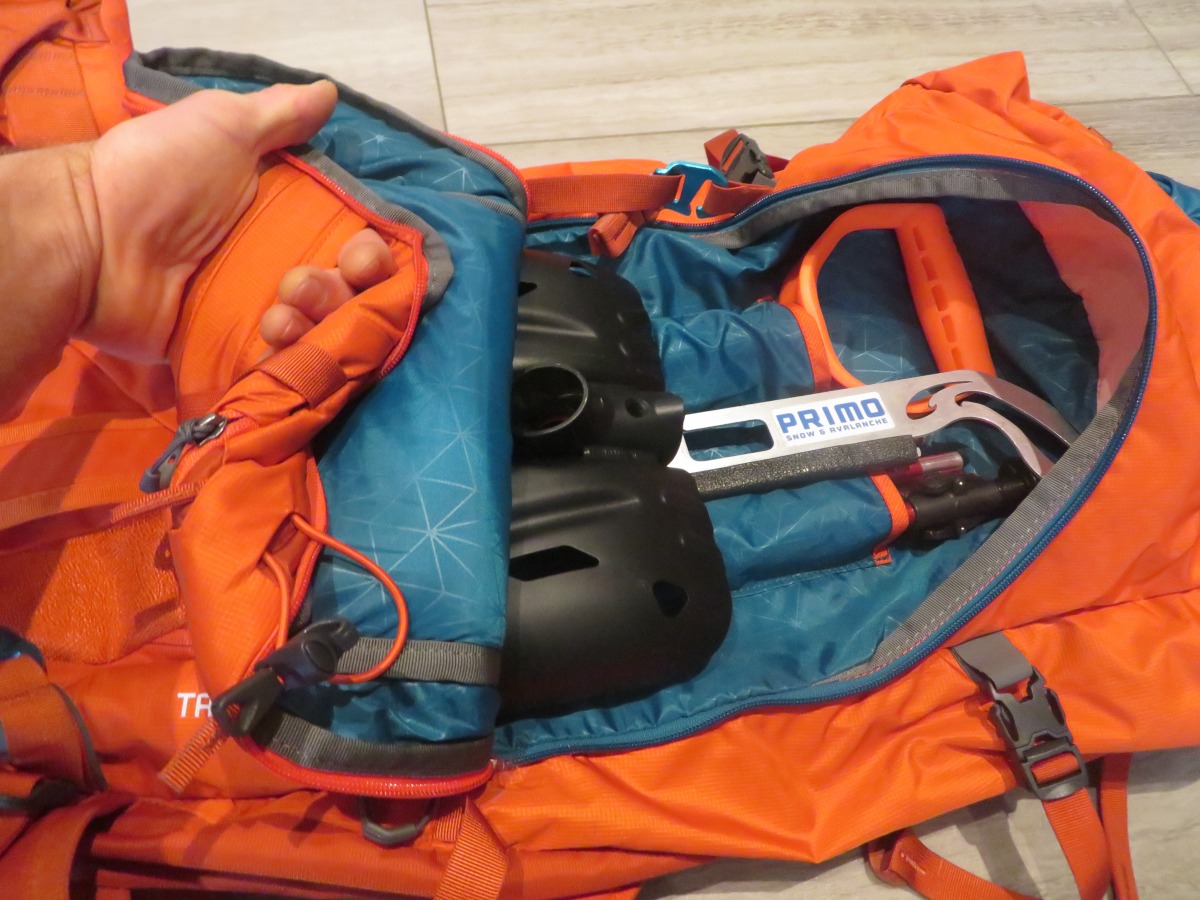
A key component of a ski pack is the avalanche tool pouch. Plenty of room for a variety of tool brands here.
In addition to the Targhee’s top-access cinch-able aperture, it features a zippered back-flap, allowing easy access deep into its core. I enjoy the combination of features, the packability, and accessibility they allow. I like a tightly packed pack, structured and organized by which items I’ll need when, throughout the day. It’s nice to be able to access the bottom to grab the heavy sharp stuff, without taking a massive back pack dump to clean out the top — something largely inconvenient in snowy environments and on slippery slopes.
The back flap is far more functional than a side zip. In my experience, this rarely allows me to get what I need without unpacking. Inevitably my jacket, lunch, or whatever is always on the wrong side, and things like spikes grab on narrow openings as exhibited in most side zips. This is not the case with the generous aperture of the back flap.
The pack is supported by a two-barred internal frame, one on either side of the back flap, running longitudinally along the back. This provides comfort and rigid structure for the back-flap to function. Comfort is not lacking among the back padding or straps, nor is it excessive. The only drawback I have observed, is the flap access zippers are of small stature and bury themselves between this padding and the pack itself, making the panel slightly more difficult to open.
The shoulder straps and back padding are water/ freeze resistant and comfortable. They rappel water and ice, even after its been jammed and melted into the cushion (think of a hard crash which packs snow into all the nooks and crannies). The 45L variety is capable of carrying larger loads, and the shoulder straps stand up to the tasks at hand. In the same breath, the pack wields an appropriate variety of compression straps to reduce the volume, keeping its bulk manageable. The pack features load adjusters on the hip and shoulders to allow for an almost-perfect weight distribution my body needs. Gregory has gone great length to [over] design their strapping and attachment mechanisms, and these are variable across the pack. This is somewhat annoying, but the components are bomber and work well.
Whether you ski or snowboard, the Targhee has options. Wide, reinforced loops exist for “A-framing” planks. These are robust and generous enough to accommodate a split board, or wider pow-rippin planks. Security is not lost with narrower wood as the loops are reinforced with additional cam locking straps. These are excessive for my purposes as my board fits comfortably. The top-level securing mechanisms are standard plastic buckles, which I enjoy. Unfortunately, the buckles have a mechanical locking feature, which is quite annoying to adjust.
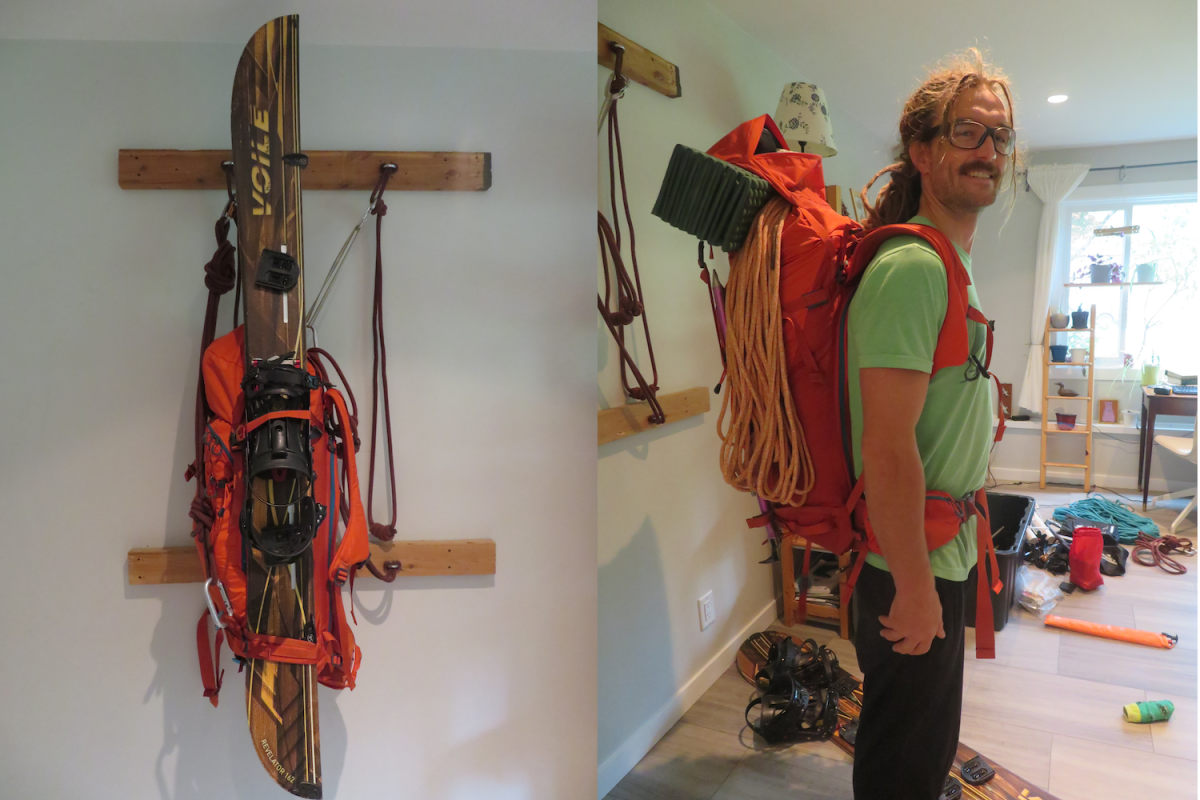
The pack holds a secure A-frame for skis or splitboard, and can handle heavier loads for longer days.
The back of the pack allows for a snowboard strapping system. The straps are just long enough to accommodate a snowboard with a fuller backpack. These utilize aluminum hooks instead of buckles. I appreciate the metal, however am not convinced of the efficacy of the current hook trend. I am of the opinion that just a little more wiggle room (the result of longer straps) would be beneficial and contribute to the ease of using this feature. Additionally the top securing mechanism for a snowboard is anchored to the avalanche rescue pocket. While conceivably designed with rescue gear access in mind, this places the burden of the snowboard on the integrity of the zipper.
Finally the pack secures and carries climbing equipment confidently. There is a rope management top strap (and the A-frame straps can be used to keep the rope tight on the pack), and metal ice axe keepers on the back of the pack — which allow for a quick draw of your piolet without removing the pack (provided your samurai skills are dialed). The piolet attachment points are somewhat satellite, positioning the instrument in a minorly awkward manner. If you love an integrated helmet net, you can place your confidence in this pack’s ability to carry one — easily accessed and secured.
Drawbacks
As much as I can argue for and against the majority of features, the following design decisions are mostly unforgivable. While not deal breakers, these do fit a general trend in backpacks we consumers should be wary of – which exist as box checking trends yet bear little significant functional weight.
While not a design decision, the Large-size version of the pack didn’t fit me. Though I feel the pack supports me and protects my back and spinal column – like a big bear hug – The volume is a touch too much, and I swim in it a bit. I have a 30 inch waist – measured above my hip bones with a base layer on. Arguably I’m the minimum dimension the large pack size accommodates (30’’ – 53’’ Large, 28”-48” Small) and I cinch the buckles and hip load adjusters completely. This creates weird stress areas and hurts after long days. Otherwise the inward-pulling waist strap cinch makes tightening easy, and for the most part the fit can be adjusted to work. The takeaway is: nail your sizing and the rest will fall into place.
The brain of the pack embodies the current trend of brainless-brain-design, describing a pack brain with no volume. The brain is designed concavely — to fit the contour of a packed backpack, as opposed to a brain with a stand alone volume. The result is a space where a sunglasses case and goggles alone are too much. To the brain’s success, it is adjustable on the front and back, which allows gear to be stacked up and secured above the main body of the pack – highly advantageous for overnight adventures; unfortunately, this isn’t enough to provide salvation for brain function in my eyes.
I find the securing straps for the brain and the snowboard attachment to be just short enough so I struggle when the pack is tight (overnight). Additionally, the pack misses a secondary strap on its flank, meaning it lacks the ability to securely attach items to its side.
The pack tapers down from shoulders to hips. While I find this excellent for stuffing items into, it provides two distinct disadvantages: The pack doesn’t rest well when placed on the ground, and packing heavy bulky items at the bottom of the pack is difficult due to its narrow, tapered nature.
There is an insulated hydration hose housing on the shoulder strap. This seems excessive, bulky, heavy, tends to snag ropes, and pipes freeze in the winter everywhere. To say this is a pointless, trendy, and poorly functioning feature is beyond obvious, but necessary. I’ll likely cut it off at some point.
Bottom line
All in all, I find the Targhee a win for the everyday-grind, multi season backcountry user. It’s diversity and durability allow it to shine in a variety of scenarios, from early winter to spring mountaineering. The majority of features are functional, and useful, only hinting at superfluousity. I find products which begin with broad foundational brushstrokes to be among the best; Having a company like Gregory, committed to making backpacks first, then applying pack technology to a specific activity decreases product based bias, which contributes to it’s successes, and adaptability.
The Gregory Targhee is available in 26L, 32L and 45L.
Nate Goodman currently lives in Whistler BC. He is a full time multidisciplinary guide, living a transitional life between North America, Japan and China. Nate is a disciple of core snowboarding, curious about the arcane nature of mountains, and is committed to the pursuit of enlightenment through the consumption of Sichuan-Chinese Food.

